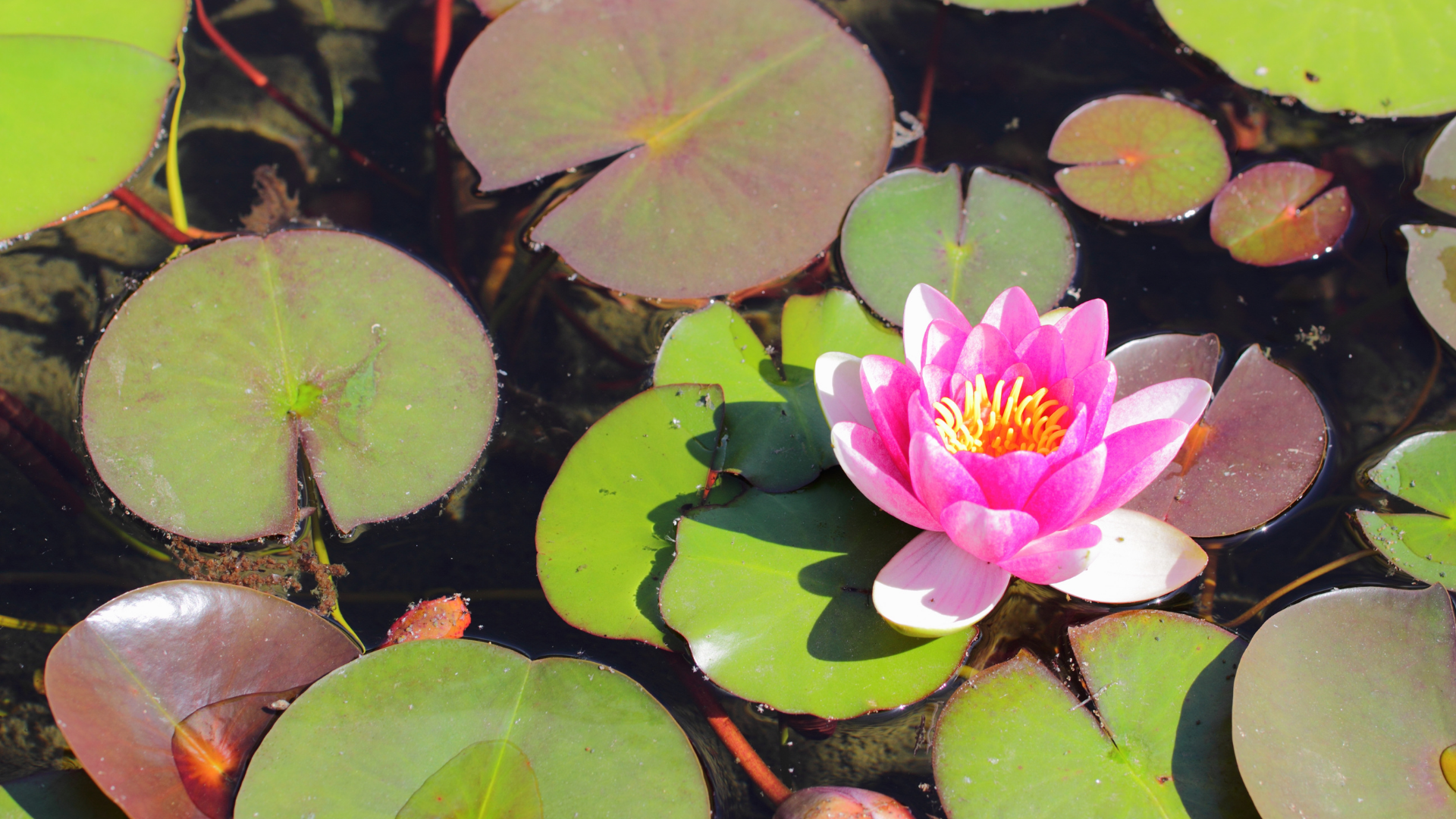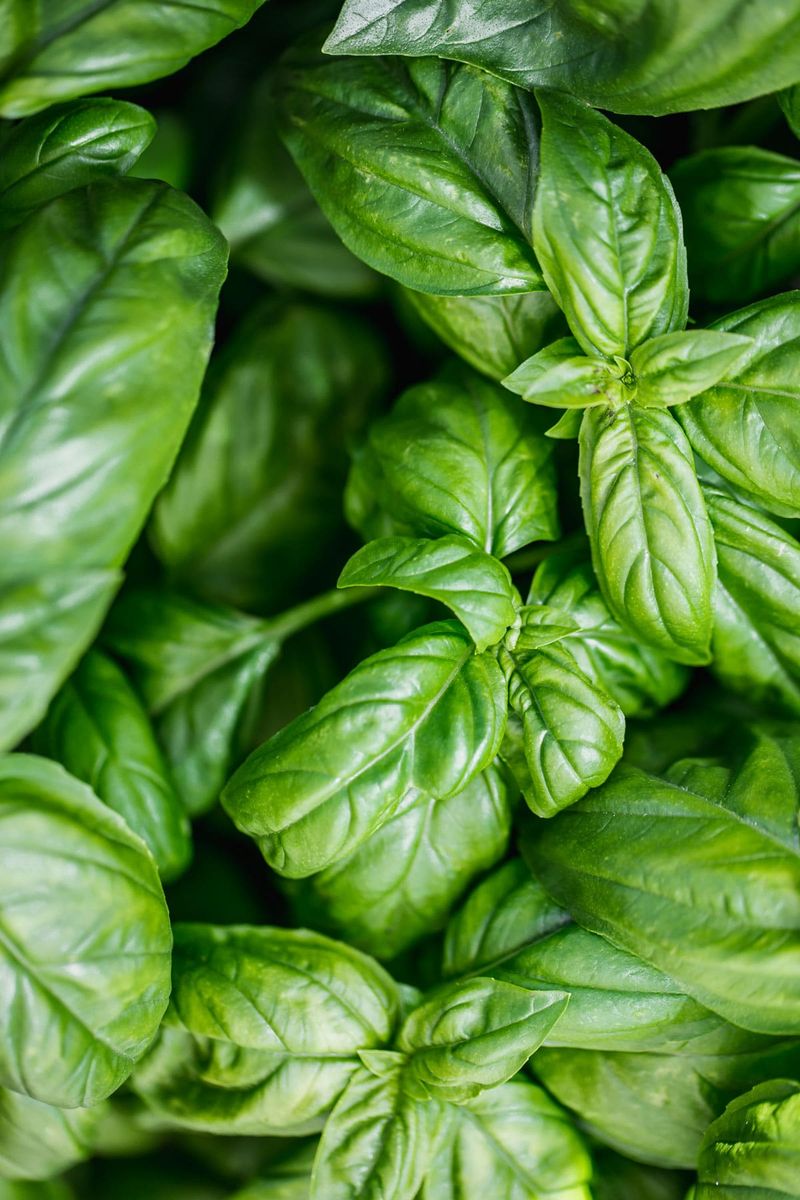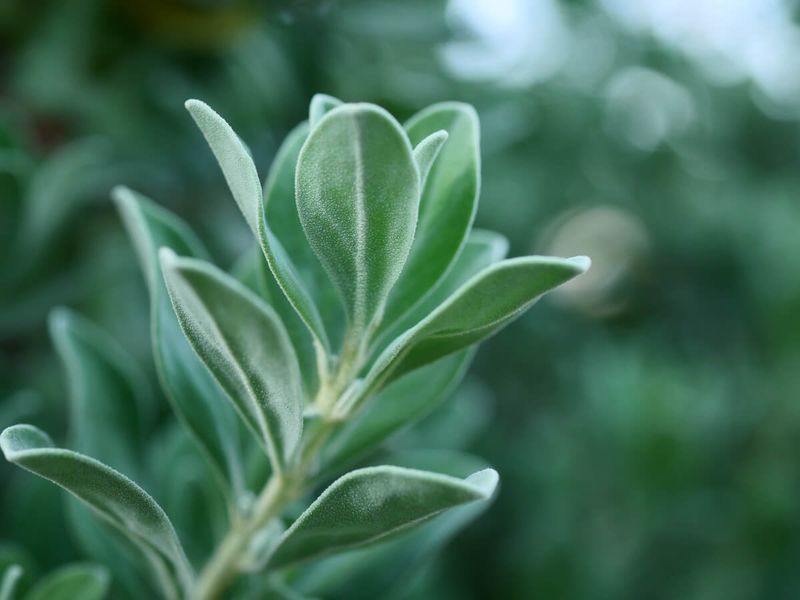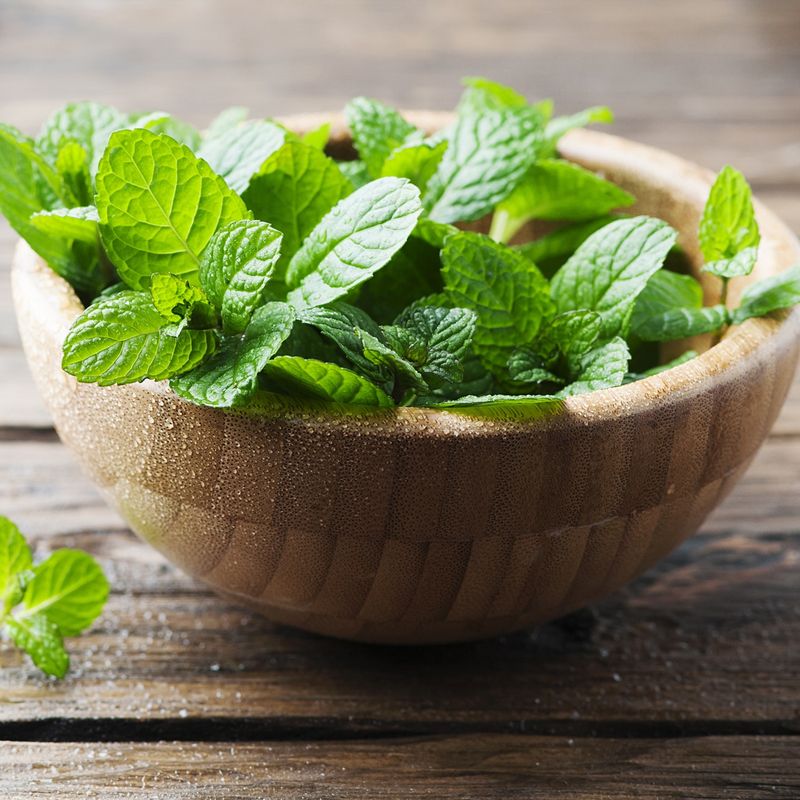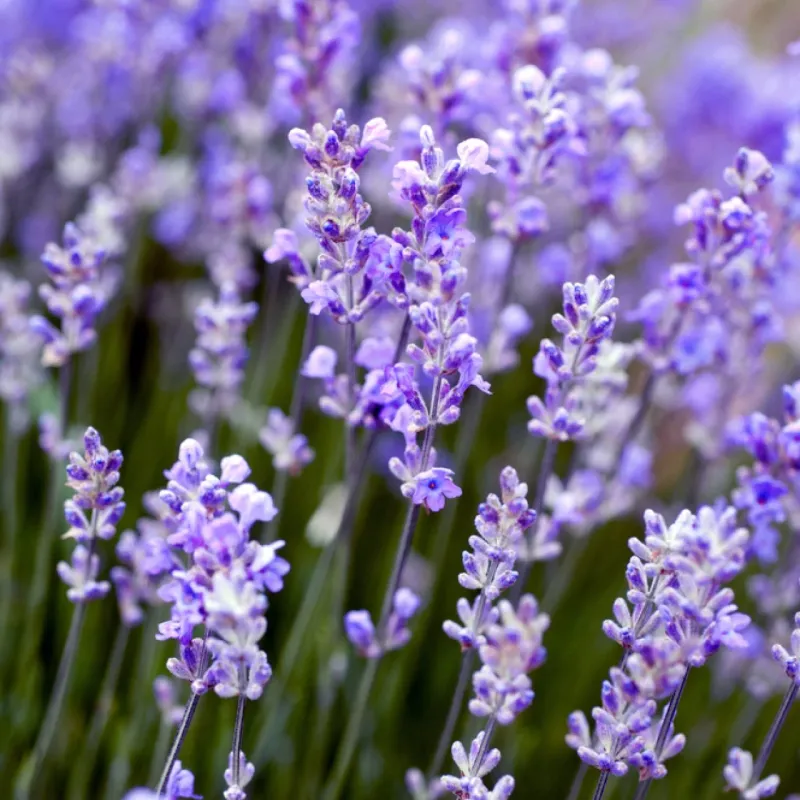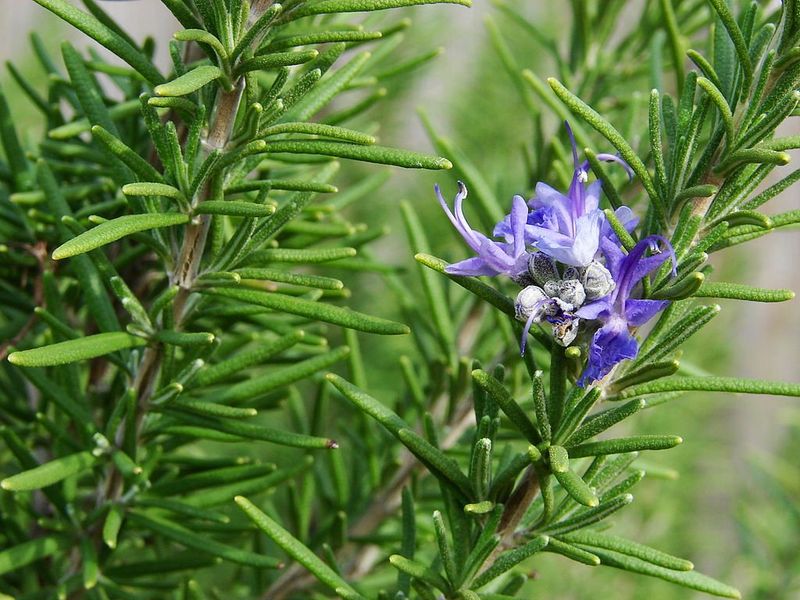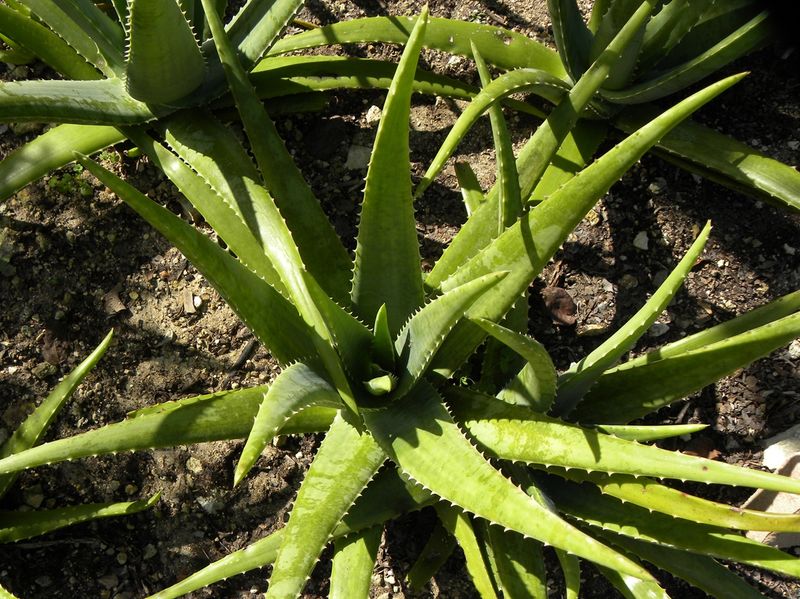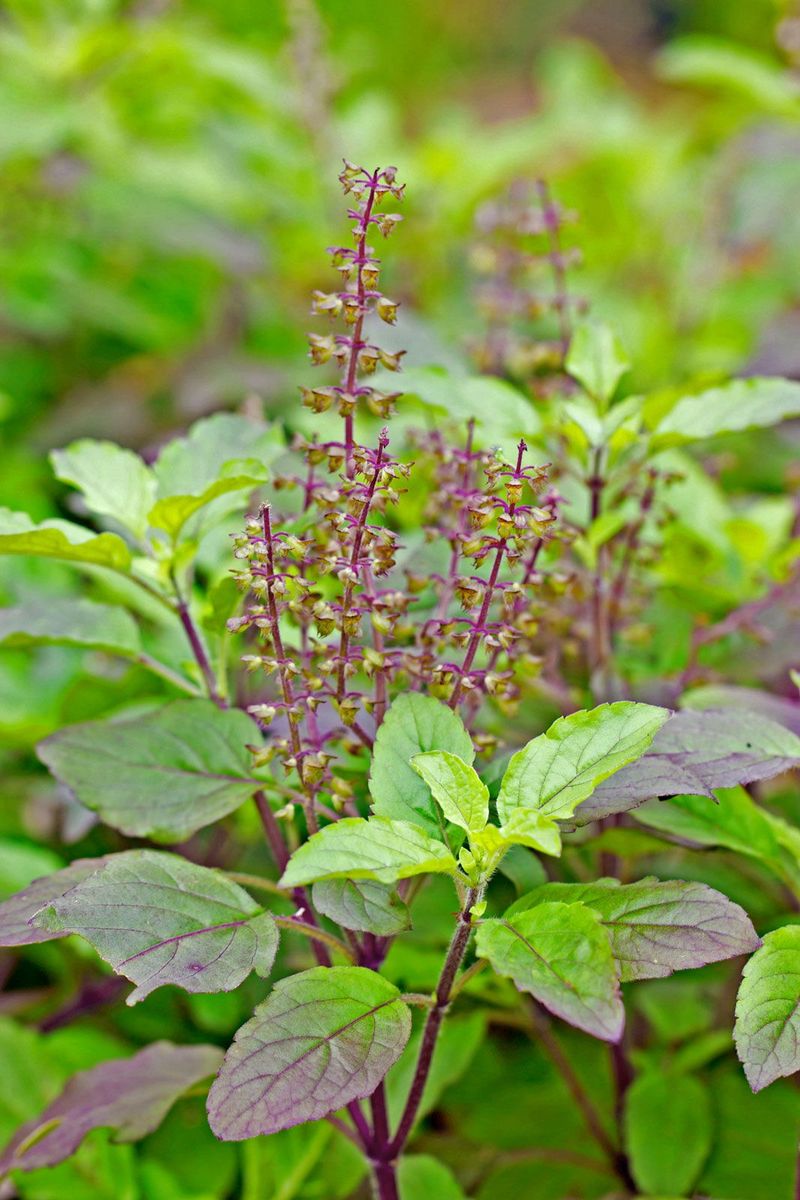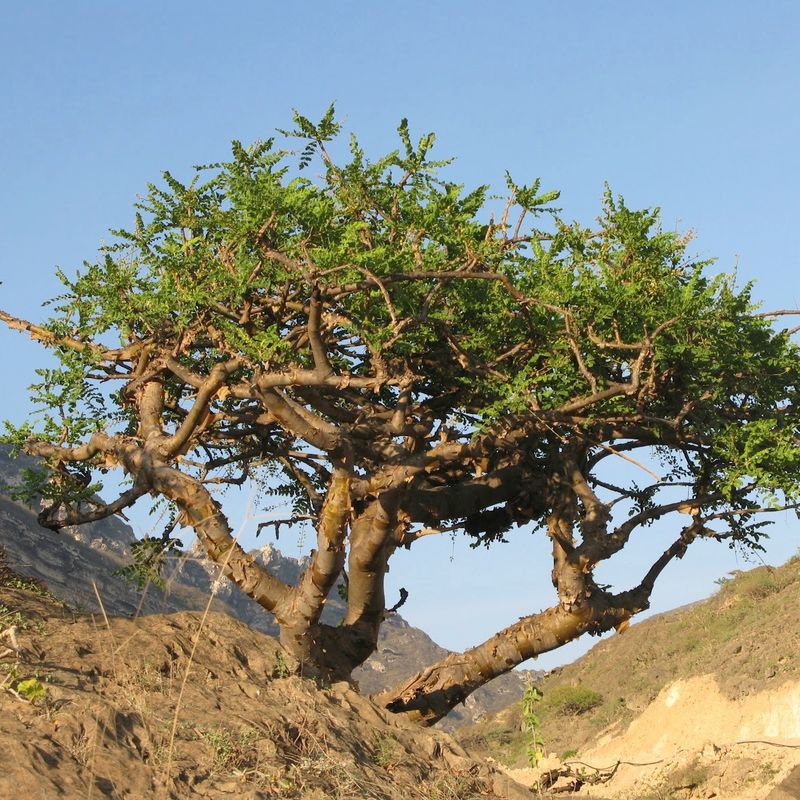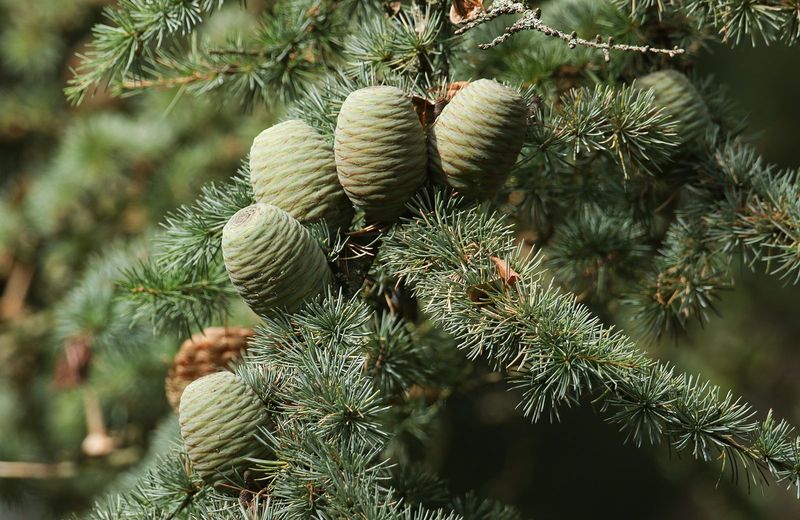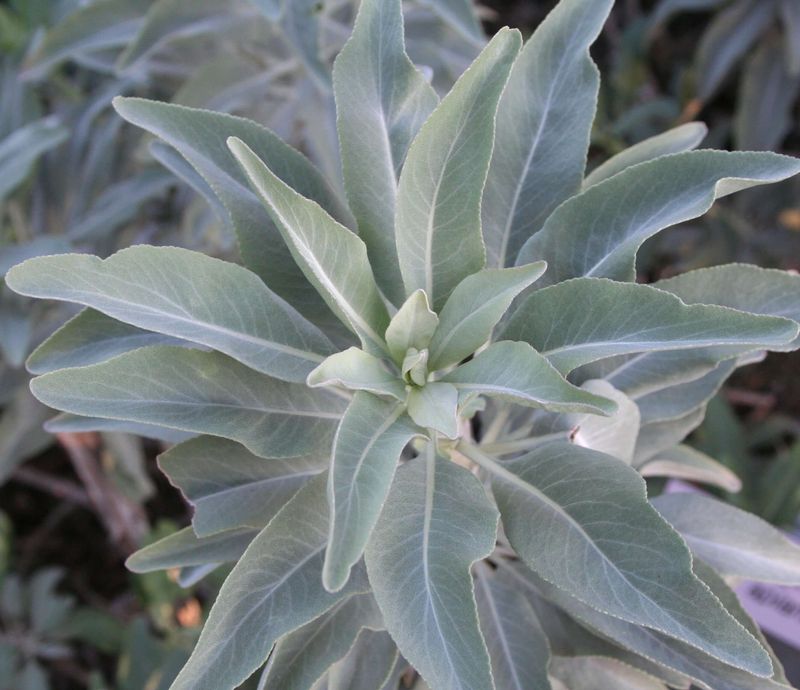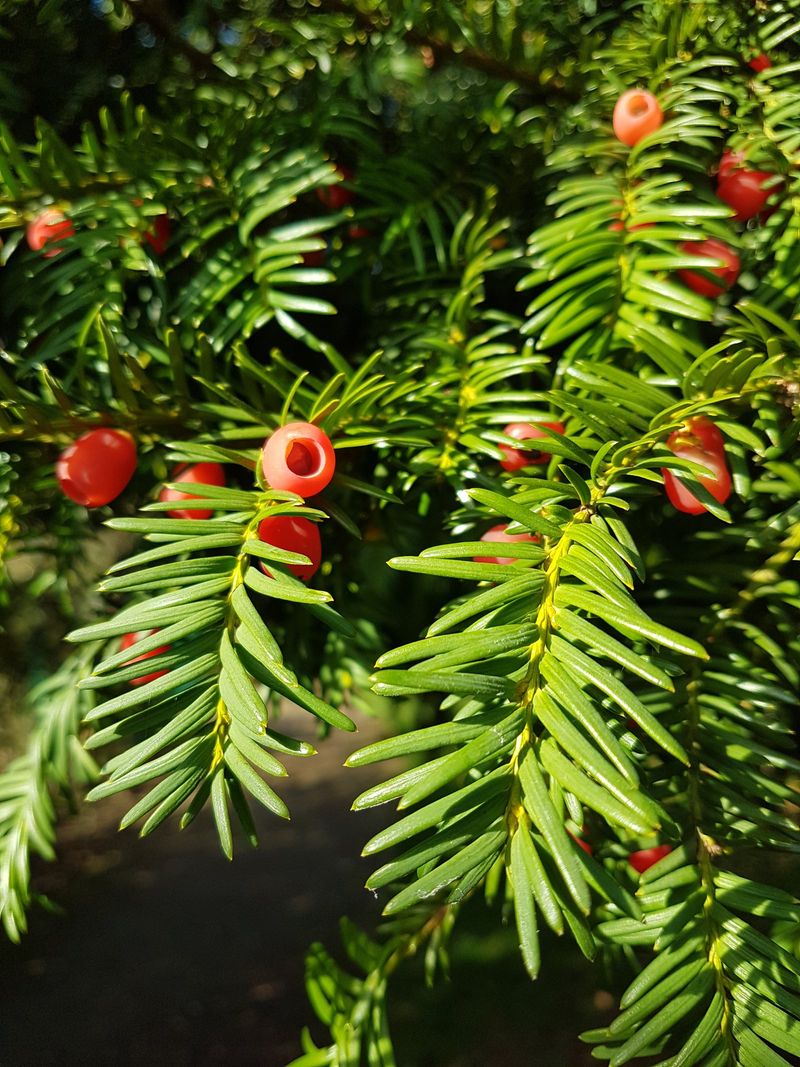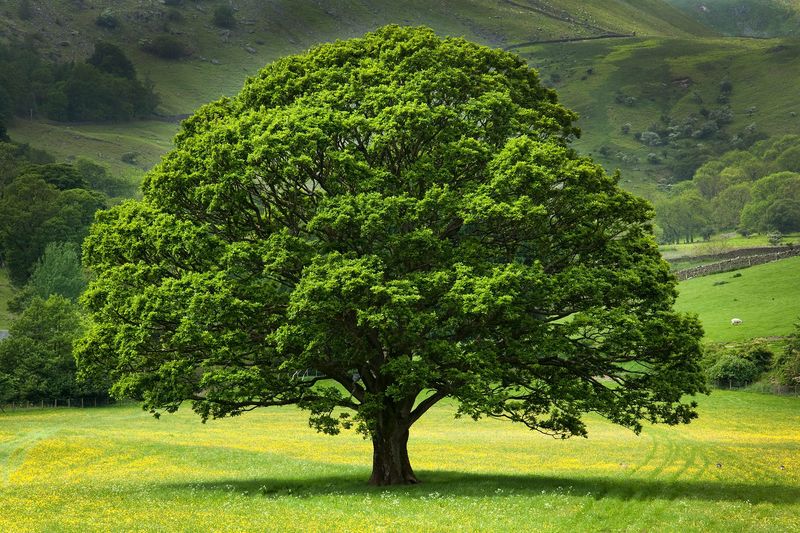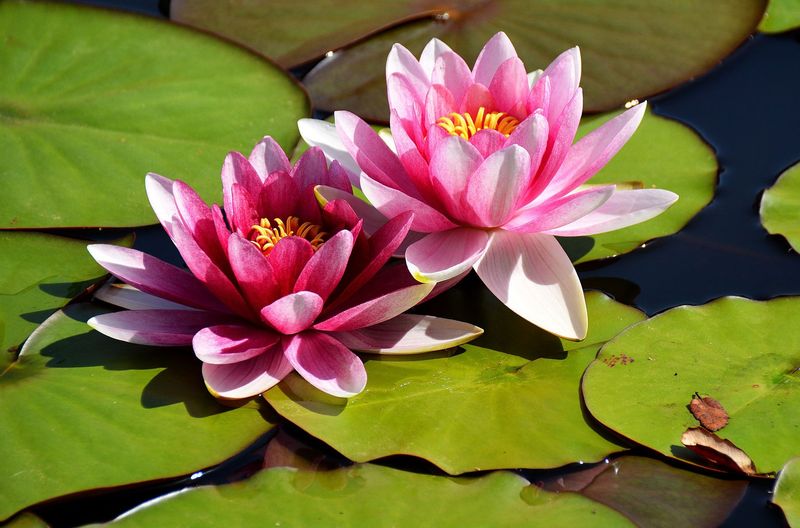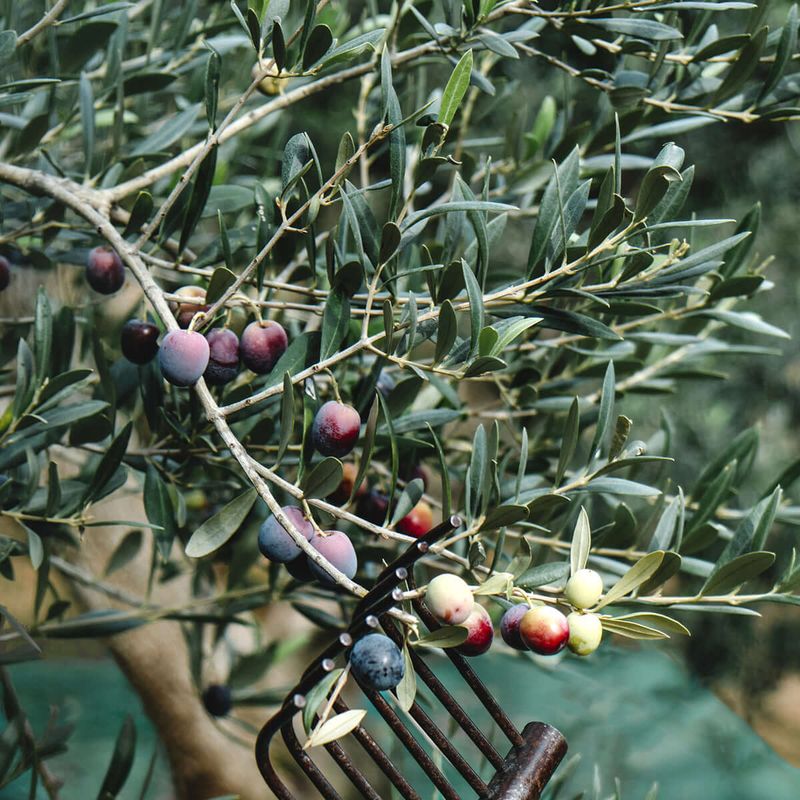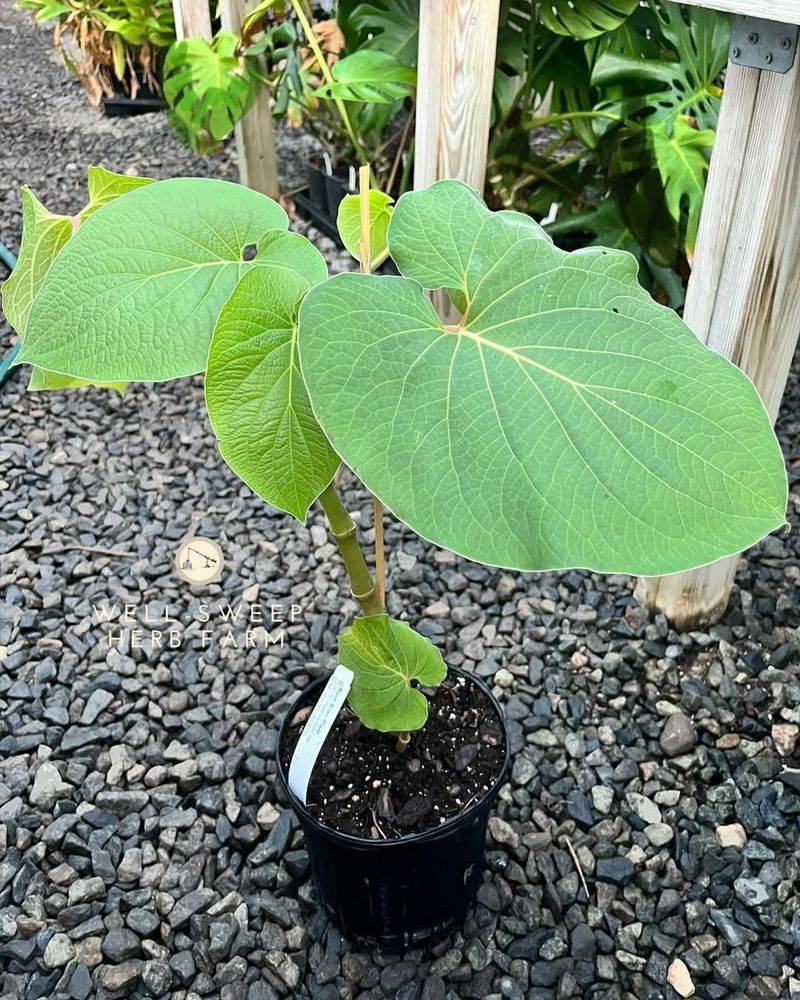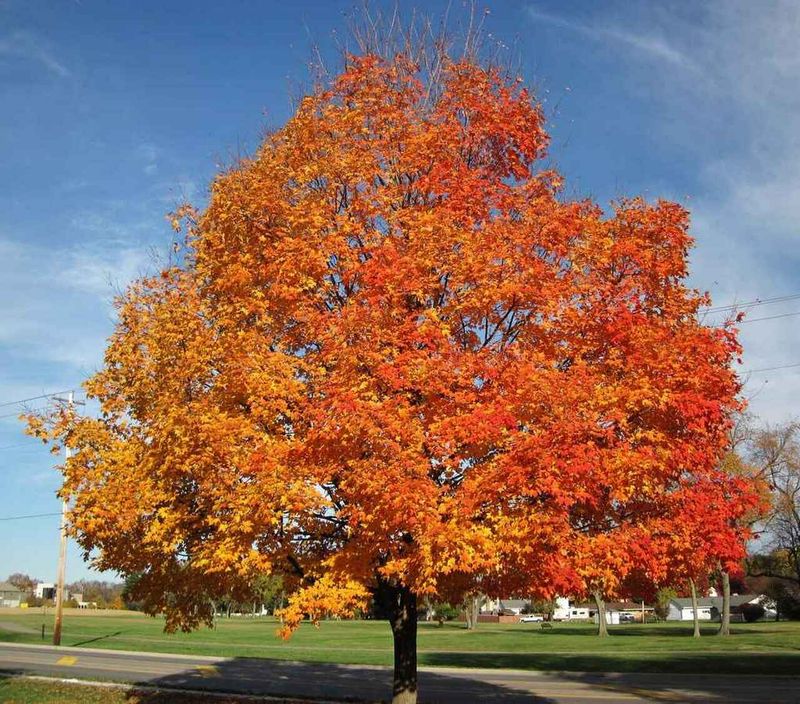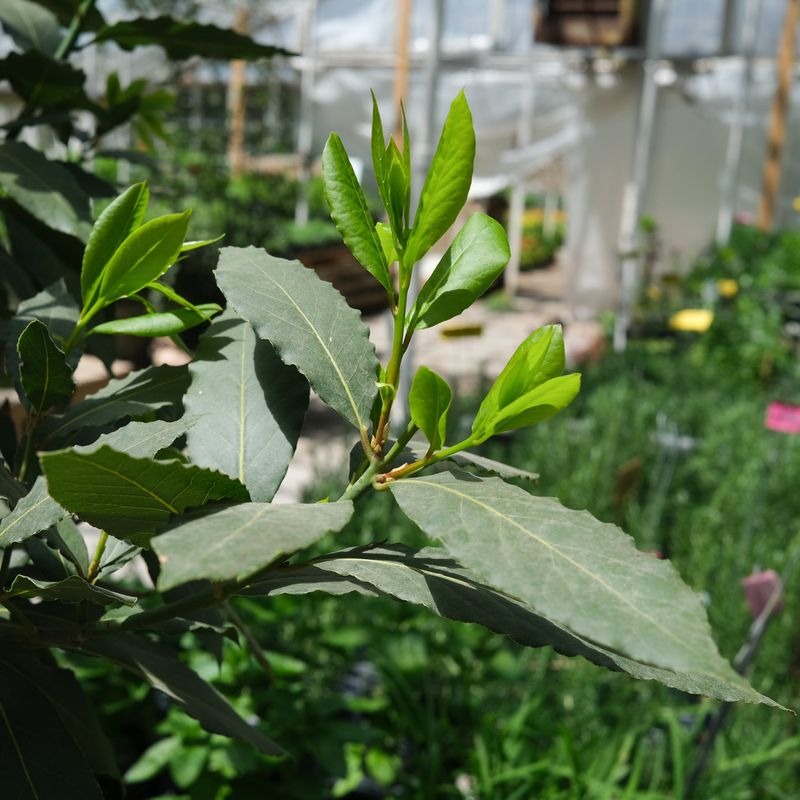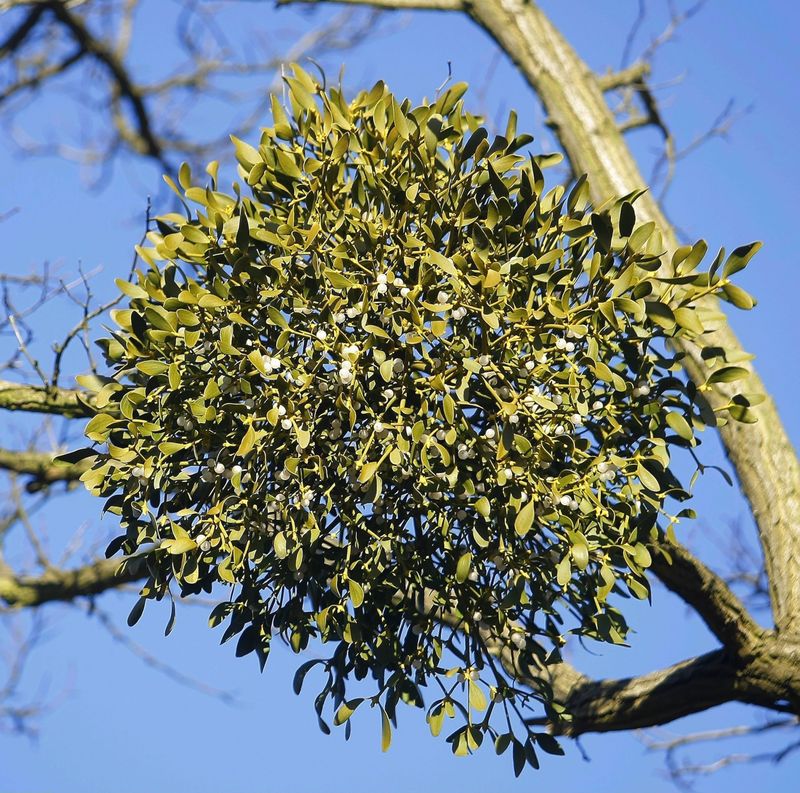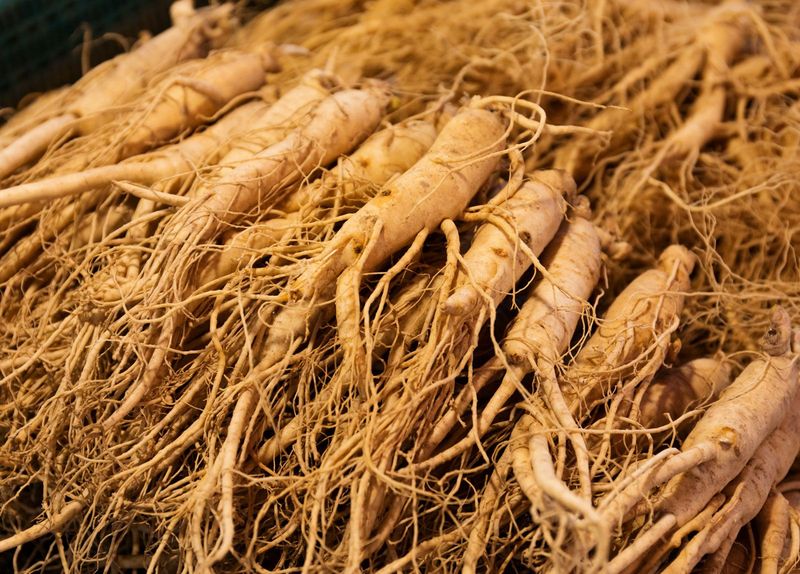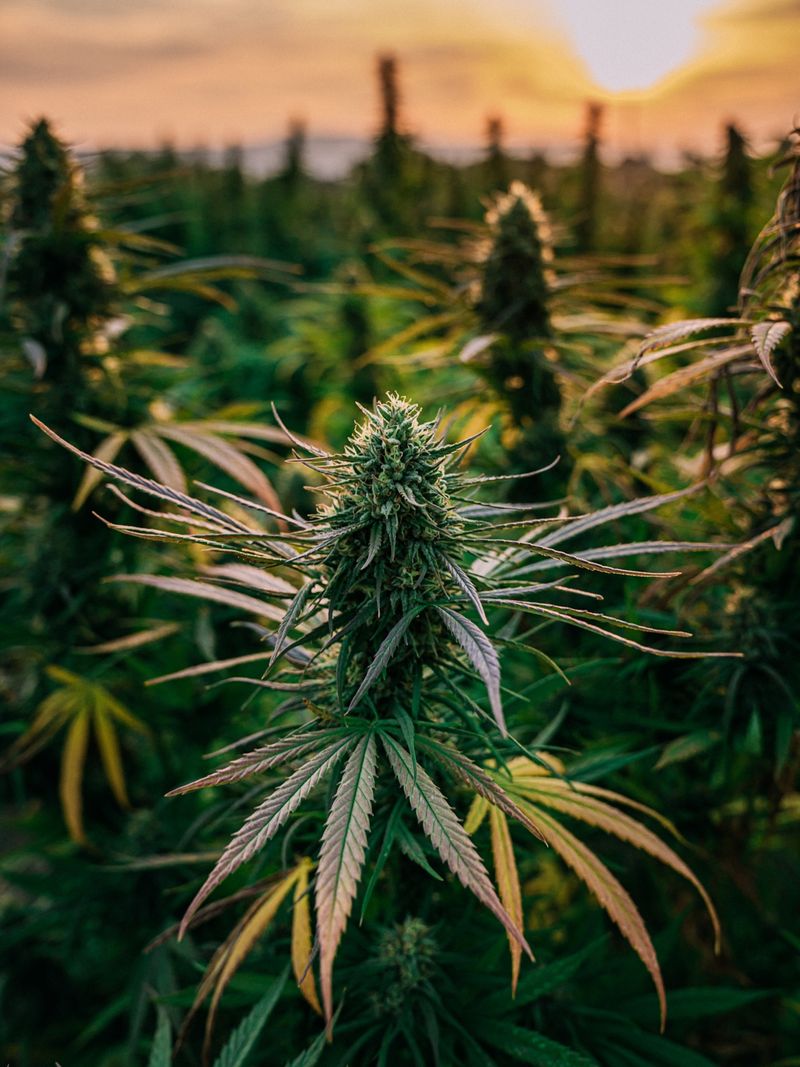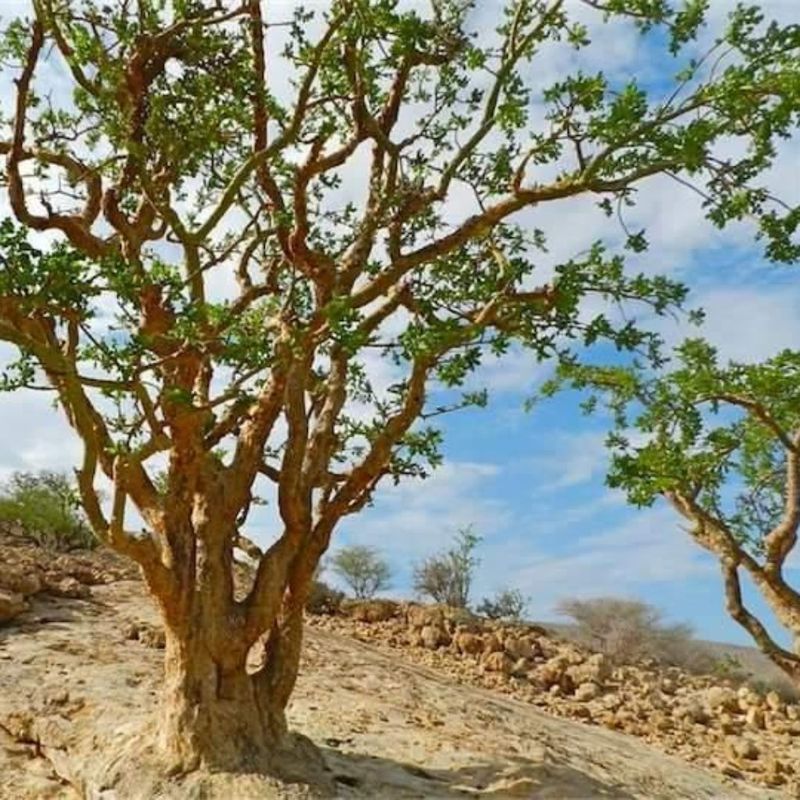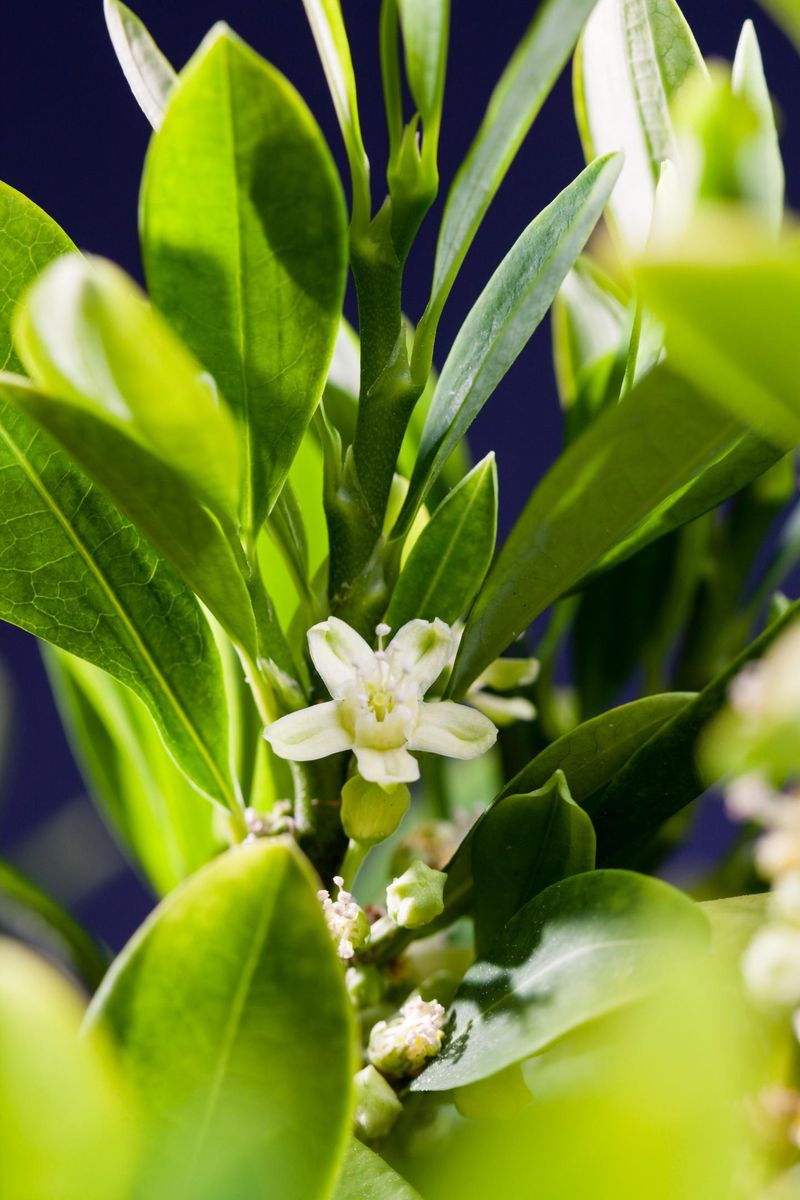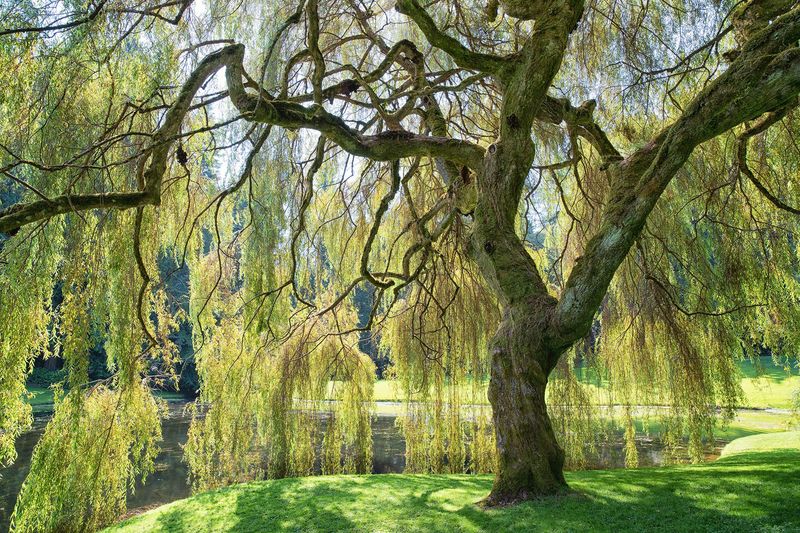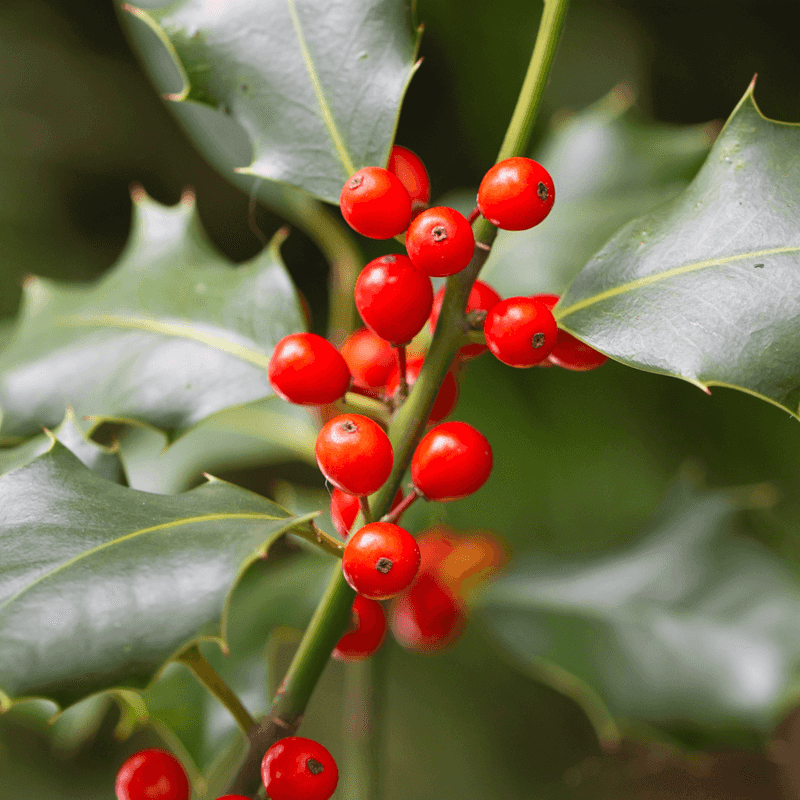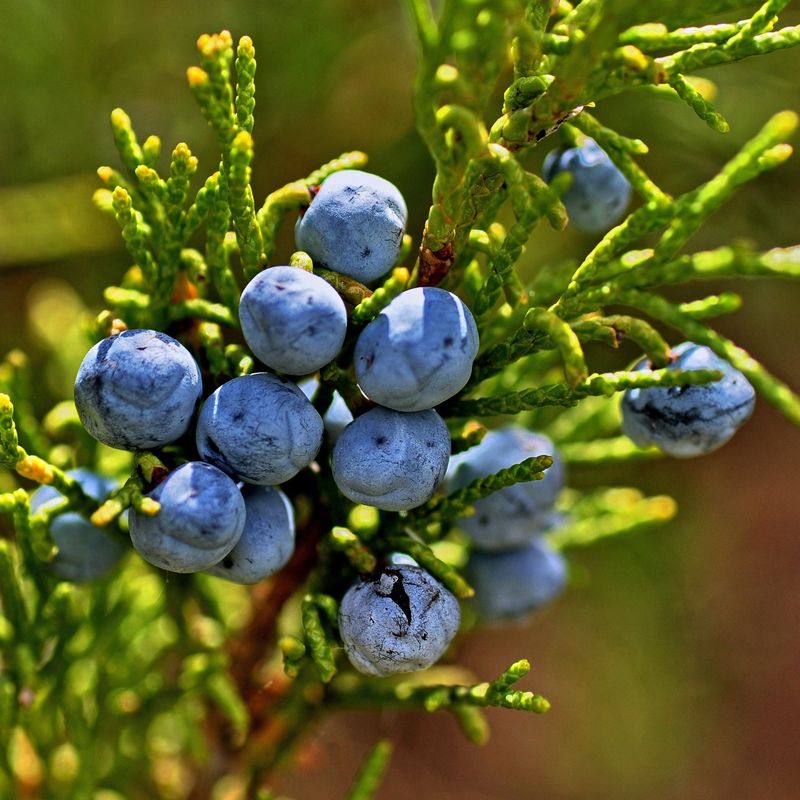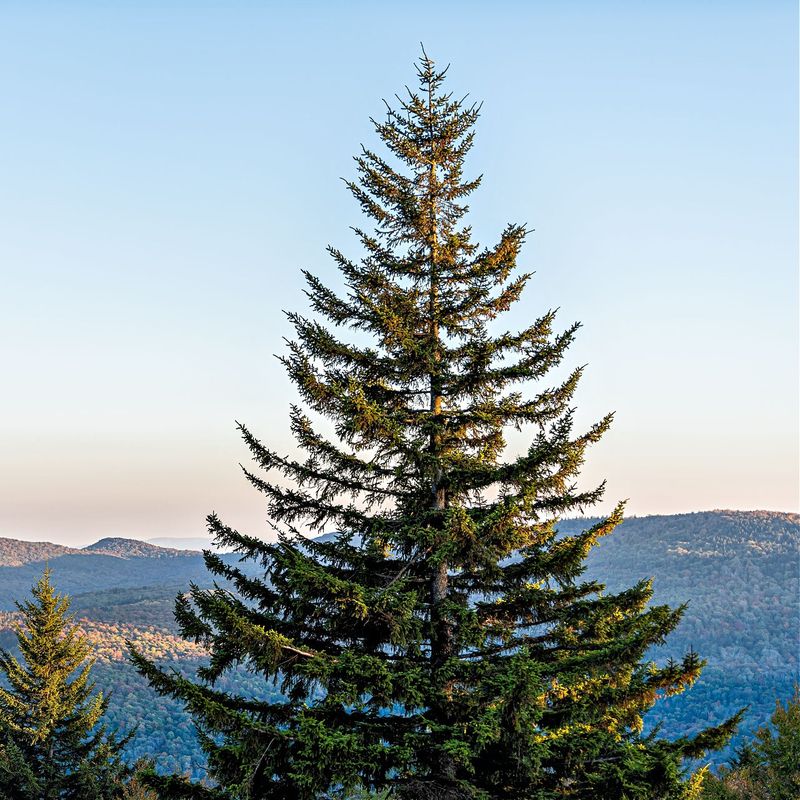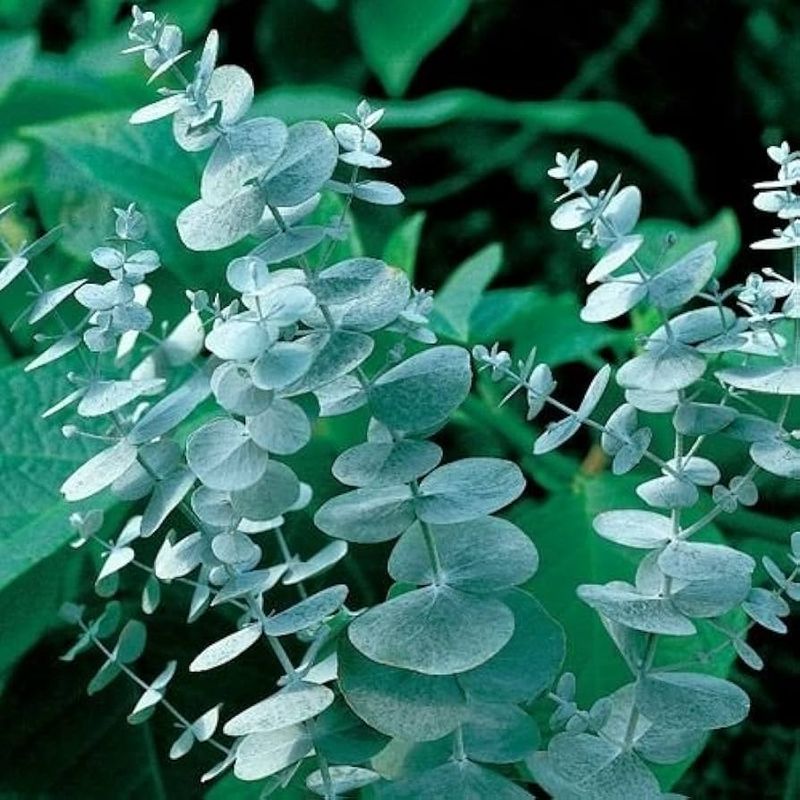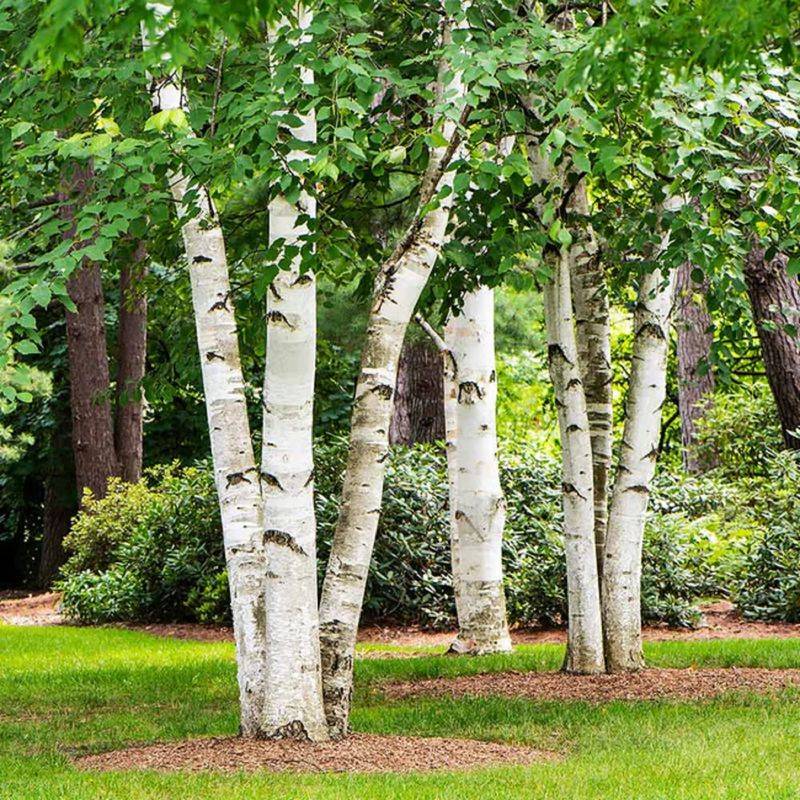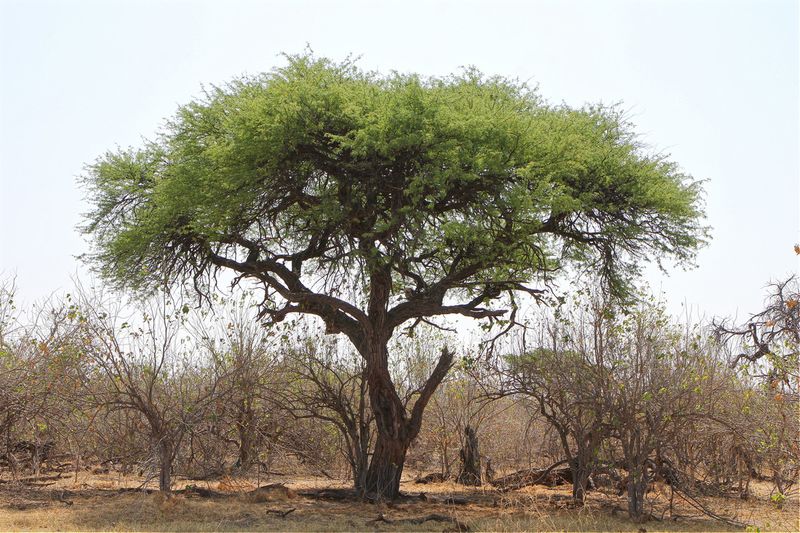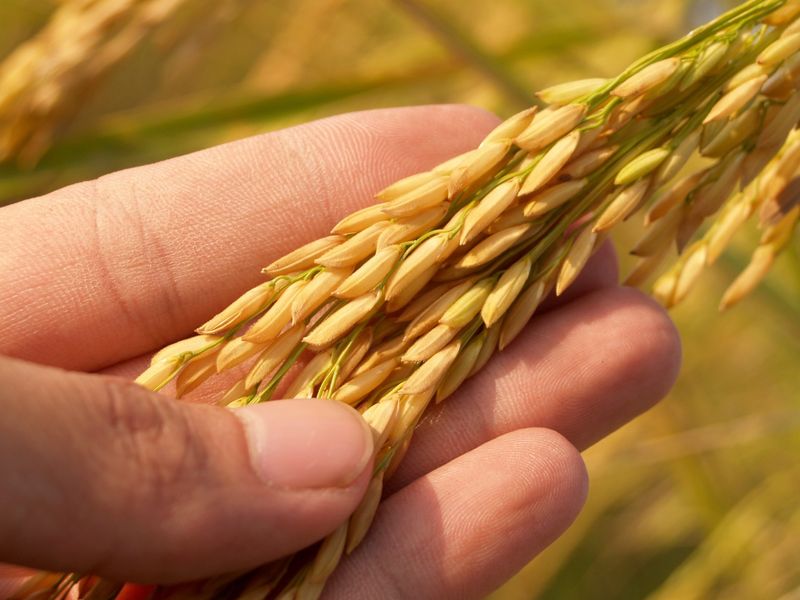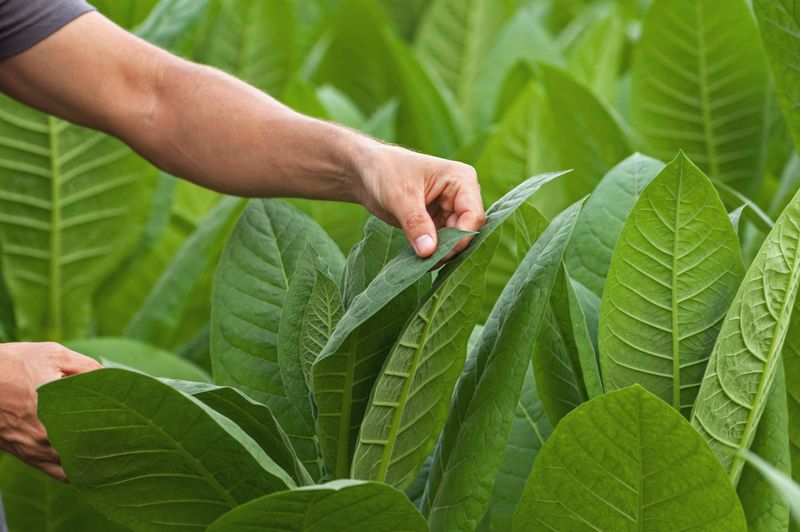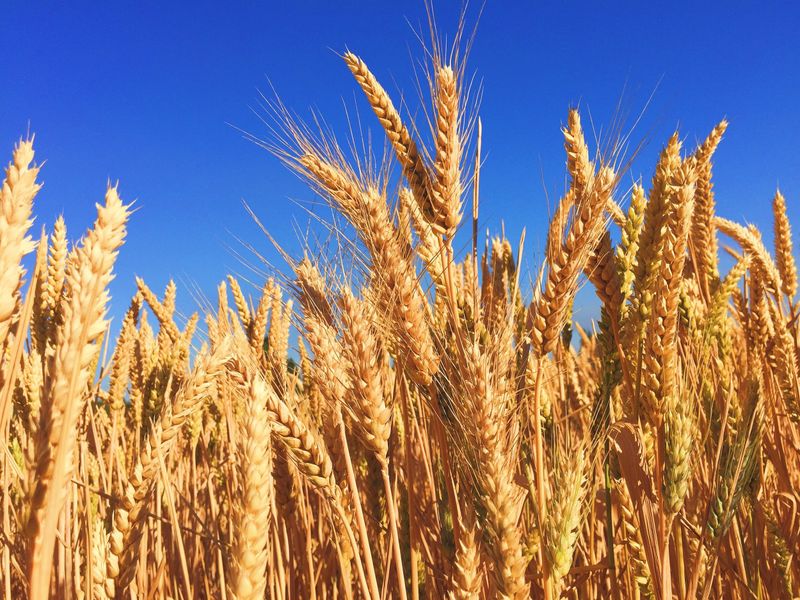Ah, the magical world of plants! Ever since I was a child, I’ve marveled at how certain plants have held deep spiritual significance across various cultures.
It’s fascinating to think that while some were revered for their beauty, others were worshiped for their healing powers. Growing these sacred plants can feel like inviting a piece of history into your garden.
Let’s embark on this botanical journey together and discover the stories behind these mystical plants and learn how to nurture them in our own backyards.
1. Basil
Every time the wind brushes against its leaves, it releases a scent that transports you to an Italian kitchen. Basil, however, isn’t just for pesto.
In Hindu culture, this plant is sacred and often used in religious ceremonies. Growing basil is as easy as pie. Ensure it basks in sunlight and receives regular water.
With a pinch of care, you’ll have a fresh supply for your culinary adventures. Watch out, though, once you start, you might turn into an amateur chef!
2. Sage
A plant that’s been a staple in my herb garden, sage is like the wise old neighbor who always has a story to tell. Known for its purifying qualities, many cultures burn sage to cleanse spaces of negative energy.
It’s a breeze to grow. Give it some sun, well-drained soil, and it will flourish. Just remember to harvest it carefully.
Too much zeal and you might end up with more sage than you know what to do with. Perfect for teas or turkey stuffing!
3. Mint
This plant is the cool friend you invite to every party, refreshing and invigorating. Mint has held sacred status in ancient Greece, symbolizing hospitality and friendship.
Mint’s growth is wild and untamed, so give it space to roam. Plant it in a pot, unless you want it to take over your garden.
With minimal fuss, you’ll have plenty for your iced teas and mojitos. Beware, though: snip a leaf, and you might find yourself yearning for a summer day!
4. Lavender
Close your eyes and imagine the calming scent that wraps around you like a soft blanket. Lavender has been cherished for centuries for its calming properties and is seen as a symbol of purity.
Planting lavender is like inviting peace into your home. Full sun and well-drained soil will keep it happy.
Harvesting it is a joy; snip some blooms and use them in sachets or teas. But remember, its charm lies in its simplicity. Let it be, and it will reward you with serenity.
5. Rosemary
A plant that conjures images of Sunday roasts and cozy kitchens, rosemary is also steeped in history. Romans believed it to be a symbol of remembrance and loyalty.
Growing rosemary is an act of patience. It thrives in well-drained soil and loves the sun. Once established, it’s quite hardy.
Use it fresh or dried, but beware. Its aromatic presence might make you nostalgic for family gatherings. Perhaps, it’s the memory of grandma’s roast that keeps it dear to us all.
6. Aloe Vera
Known for its healing gel, this plant is a savior for sunburns and minor cuts. Aloe vera has been regarded as sacred in many cultures for its medicinal properties.
Caring for aloe is simple. Place it where it can soak up the sun, water sparingly, and it will thrive. It’s like having a little green pharmacy at home.
Just remember, it’s not a fan of frost. Keep it warm, and it’ll be your go-to for skin remedies.
7. Holy Basil (Tulsi)
A plant revered in Indian households, Tulsi or Holy Basil is considered an earthly manifestation of the goddess Tulsi. Its spiritual importance is unmatched.
Growing Tulsi is like embracing a piece of Indian culture. It thrives with sunlight and moderate watering. Its strong aroma and medicinal benefits make it a staple in herbal teas.
But more than that, it’s a symbol of wellness and spirituality. Remember to whisper a thank you when you pluck its leaves.
8. Frankincense
Mentioned in biblical tales, frankincense is the aromatic resin that’s been valued for its incense and medicinal properties. Historically, it was one of the gifts presented to the newborn Jesus.
Growing this tree requires patience, as it’s accustomed to arid conditions. Plant it in well-drained soil with plenty of sunlight.
While it might take time to mature, its resin is worth the wait. A whiff of its scent, and you’re transported to ancient times filled with mystery and reverence.
9. Cedar
Majestic and towering, cedar trees have been revered by various cultures for their strength and durability. The ancient Egyptians used its wood to build ships and temples.
Growing a cedar might not be a backyard task, but it’s possible if you have the space. These trees love well-drained soil and ample sunlight.
Their fragrant wood is a favorite for crafting furniture and essential oils. Remember, it’s a commitment, but one that adds grandeur to any landscape.
10. White Sage
A plant often associated with cleansing rituals, white sage has been used by indigenous tribes for its purifying smoke. It’s a staple in spiritual ceremonies and smudging practices.
Growing white sage requires a sunny spot and well-drained soil. It’s drought-resistant once established but doesn’t like being over-watered.
Harvest it thoughtfully, as it’s a sacred plant. Use the leaves in smudge sticks, and let their smoke carry your worries away. It’s a gentle guardian of your space.
11. Yew
A tree wrapped in myth and legend, the yew has been a symbol of immortality and rebirth. Its presence in churchyards across Europe is a testament to its sacred status.
Growing yew requires patience and care. It likes well-drained soil and partial shade. Watch out, though—it’s toxic if ingested.
Despite its slow growth, its dense foliage makes it an excellent hedge. With time, it becomes a living monument, whispering the secrets of the past.
12. Oak
Standing tall and strong, the oak has been a symbol of endurance and strength across cultures. Druids considered it sacred, believing it housed powerful spirits.
Growing an oak is a legacy project. It thrives in deep, well-drained soil and enjoys sunlit spots. While it grows slowly, its shade and acorns attract wildlife, turning your garden into a natural haven.
Remember, as it grows, so does its connection with the world, standing as a testament to nature’s resilience.
13. Lotus
Emerging from murky waters, the lotus is a symbol of purity and enlightenment in many Eastern cultures. Its beauty and grace are admired worldwide.
Growing lotus requires space and patience. Plant it in a sunny pond or a large tub. Ensure it has warm water to encourage blooming.
As it unfurls, its delicate petals reveal a story of transformation. It’s a reminder that beauty can arise from the depths, untainted and serene, offering peace to those who behold it.
14. Olive
A tree synonymous with peace, the olive has been a vital part of Mediterranean culture for millennia. Its oil is revered for its culinary and medicinal uses.
Growing an olive tree is a sun-loving endeavor. It thrives in well-drained soil and requires minimal watering once established. Its fruits, rich in flavor, are a treat to harvest and enjoy.
Remember, it’s not just a tree; it’s a symbol of harmony and prosperity, bearing gifts that have nourished civilizations.
15. Cinnamon
Cinnamon’s aroma conjures memories of spiced cakes and warm drinks. This spice, once more valuable than gold, has been treasured for its medicinal and culinary qualities.
Growing cinnamon requires a warm, humid climate and well-drained soil. As it matures, its bark is harvested, dried, and ground into the spice we adore.
It’s a tree that keeps giving, connecting us to ancient trade routes and secrets of flavor. Every sprinkle of cinnamon tells a story of far-off lands and timeless traditions.
16. Maple
Known for its syrup, the maple tree is celebrated in North America for its sweet offerings. Indigenous tribes regarded it as a gift from the Creator.
Growing a maple tree is a joy, especially if you love fresh autumn colors. It thrives in moist, well-drained soil and enjoys sunny spots.
Tap it for syrup in spring, and be prepared for a sweet reward. It’s a labor of love that turns pancakes into a celebration of nature’s bounty.
17. Bay Laurel
Decorating ancient emperors and chefs alike, the bay laurel is a symbol of victory and culinary finesse. Its leaves have graced crowns and stews for centuries.
Growing bay laurel is straightforward. It prefers a sunny spot and well-drained soil. Keep it trimmed, and it will reward you with aromatic leaves perfect for soups and sauces.
Just remember, you’re not just growing a plant; you’re cultivating a piece of history that’s spiced up countless feasts across cultures.
18. Mistletoe
Known for its romantic connotations during the holidays, mistletoe has a sacred history among ancient druids as a symbol of fertility and protection.
Growing mistletoe involves grafting it onto a host tree like oak or apple. It thrives in well-lit areas and requires patience.
Once established, its berries are a winter delight. It’s a quirky plant with a fascinating history, making kisses under its boughs even more enchanting.
19. Ginseng
Often dubbed the ‘man-root’, ginseng is revered in traditional medicine for its energy-boosting properties. It’s been a staple in Asian cultures for centuries.
Growing ginseng requires shade and patience, as it takes years to mature. Plant it in rich, well-drained soil and watch its roots develop into nature’s energy tonic.
It’s an adventure in slow gardening, but when you finally harvest it, you’ll understand why it’s been worth the wait. Sip on its tea and feel rejuvenated!
20. Hemp
A plant with a tumultuous history, hemp has been used for everything from clothing to medicine. Its resilience and versatility are unmatched.
To grow hemp legally, ensure you comply with local regulations. It loves sunny spots and well-drained soil. Its fibers are strong, and its seeds are nutritious.
Whether you’re crafting or cooking, hemp offers endless possibilities. Just remember, it’s a plant that’s been misunderstood and celebrated in equal measure, standing as a testament to nature’s ingenuity.
21. Myrrh
Treasured for its fragrant resin, myrrh has been a part of sacred rituals and medicine since ancient times. It’s a symbol of suffering and healing.
Growing myrrh requires an arid environment and patience. Plant it in well-drained soil and ensure it gets plenty of sunlight. Its resin, once extracted, can be used in incense and balms.
It’s a plant that connects us to ancient tales of exploration and spiritual journeys, offering a scent that’s rich in history and mystery.
22. Coca
Known for its controversial uses, coca leaves have been sacred to Andean cultures for their stimulant and medicinal properties. It’s a plant of both reverence and debate.
Growing coca requires a warm climate and careful legal consideration. It thrives in well-drained soil with ample sunlight. Its leaves have been chewed traditionally for energy and altitude sickness.
While its modern reputation might overshadow its cultural significance, coca remains a sacred symbol of resilience and tradition.
23. Willow
With its graceful, drooping branches, the willow has been a symbol of melancholy and healing. It’s been used in traditional medicine for its pain-relieving properties.
Growing willow is a simple joy. It thrives in moist soil and loves water. Plant it by a pond, and it will create a picturesque scene. Its bark, rich in salicin, is nature’s aspirin.
Remember, it’s more than just a tree; it’s a living balm, offering comfort and beauty in its gentle sway.
24. Holly
Synonymous with Christmas, holly has been a symbol of protection and eternal life. Its spiky leaves and red berries have decorated homes for centuries.
Growing holly requires patience. It thrives in well-drained soil and partial shade. Once established, it’s a hardy shrub that attracts birds with its berries.
It’s not just a festive decoration; it’s a plant that’s woven into the fabric of winter traditions, offering cheer and a touch of the divine in its evergreen embrace.
25. Juniper
A plant that’s as prickly as it is ancient, juniper has been used for protection and purification. Its wood and berries have flavored spirits and medicines alike.
Growing juniper is rewarding. It thrives in well-drained soil and sunny spots. Its berries, while not for casual snacking, are used in gin and herbal remedies.
It’s a resilient plant that adds character to any landscape, standing as a testament to the enduring power of nature’s gifts.
26. Pine
Evergreen and towering, pine trees are a symbol of resilience and life. Their needles have been used in teas and their wood in construction.
Growing pine is straightforward. They prefer well-drained soil and sunlight. Plant one, and it may become a family heirloom.
Its cones are not just decorative; they’re nature’s way of spreading life. Pine is a tree that endures, offering shelter and a reminder of the world’s ever-renewing cycle.
27. Eucalyptus
Known for its fresh scent, eucalyptus has been a staple in traditional medicine and koala diets. It’s a plant of both utility and beauty.
Growing eucalyptus requires a warm climate and well-drained soil. It loves sunlight and can grow rapidly. Its leaves are distilled into essential oils, known for clearing sinuses and refreshing spaces.
Remember, it’s more than just a fragrant tree; it’s a piece of Australia’s natural heritage.
28. Birch
With its distinctive white bark, the birch tree is a symbol of renewal and purification. Its bark and sap have been used in traditional crafts and medicines.
Growing birch is a rewarding endeavor. It prefers moist, well-drained soil and sunny locations. Its delicate leaves rustle in the wind, creating a soothing soundscape.
Birch isn’t just a tree; it’s a living testament to the cycles of nature, shedding and renewing with the seasons.
29. Acacia
With its delicate yellow flowers, acacia has been a symbol of endurance and resurrection. Its wood and gum have been used in ancient rituals and medicines.
Growing acacia requires a warm climate and well-drained soil. It thrives with sunlight and minimal water. Its blossoms are a magnet for pollinators, turning any garden into a bustling ecosystem.
Acacia is more than just a plant; it’s a connection to ancient landscapes and cultural practices.
30. Rice
A staple for billions, rice is revered in many cultures as a symbol of fertility and life. Its grains have fed civilizations for centuries.
Growing rice is a labor of love. It requires flooded fields and a warm climate. Plant it in a suitable area, and watch as it transforms into lush greenery. Harvesting rice is a celebration of hard work and sustenance, a reminder of the cycles that sustain us. It’s more than food; it’s a sacred lifeline.
31. Tobacco
Loved and loathed, tobacco has been sacred to Native American cultures for its ceremonial uses. It’s a plant steeped in tradition and controversy.
Growing tobacco requires careful planning. It thrives in well-drained soil with plenty of sunlight. Once matured, its leaves are harvested and cured.
While its modern reputation is divisive, tobacco remains a cultural cornerstone, woven into the heritage of many indigenous practices. It’s a plant that invites reflection on its multifaceted legacy.
32. Wheat
As you walk through golden fields, you might feel a connection to ancient farmers. Wheat has been the backbone of civilizations, symbolizing abundance and prosperity.
Growing wheat is straightforward. Plant it in rich soil and watch it flourish. As it matures, its grains turn gold, ready for harvest.
It’s a plant that has fed generations, grounding societies in its grains. Wheat is more than just a crop; it’s a testament to humanity’s farming ingenuity and endurance.

